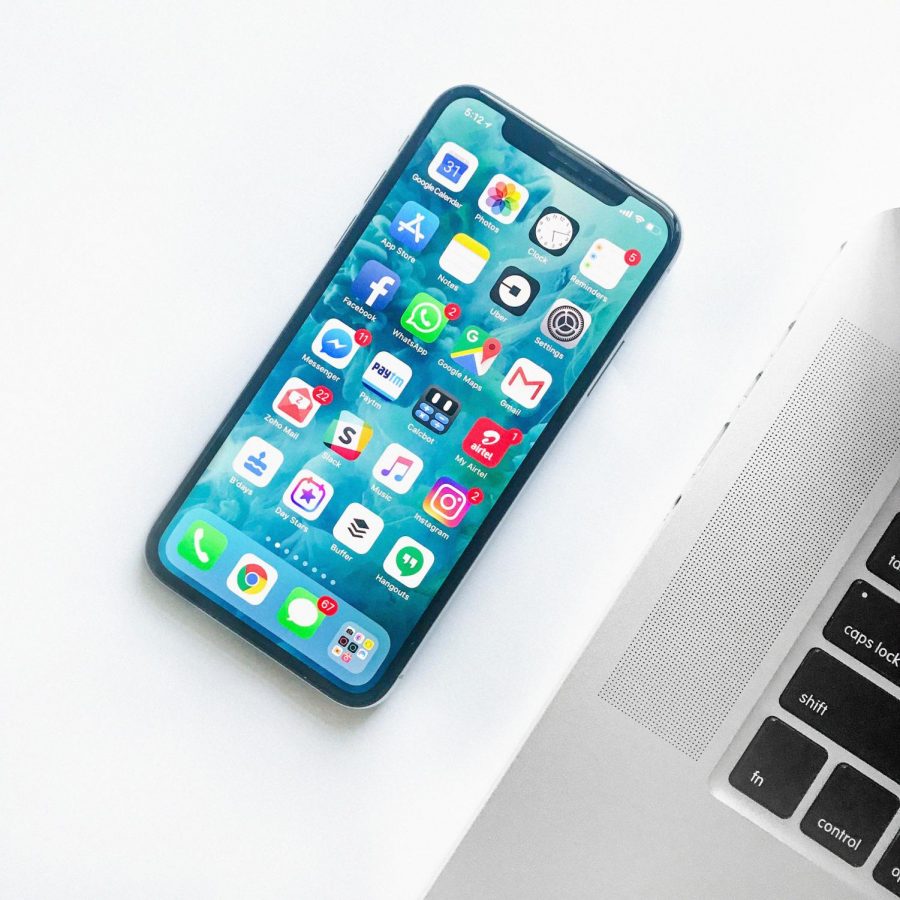Is the widespread increased use of technology good for teens?
Technology both helps, harms children
Cell phones dominate free time for many teens.
September 29, 2021
Kids have access to screens all around them. Most children have TVs, computers, tablets, phones, and other things. Research shows that older children and teenagers spend around 11 hours per day with media. That time adds up, and young people are spending more time with technology than they do in school.
Children and teenagers around the country aren’t cutting down their media consumption, either. Some teenagers say they send thousands of text messages each month, stay up until 2 a.m. scrolling social media, and spend hours each day playing video games. And this has continued to get more intense over time, as more apps and options arise to distract kids.
Researchers and health professionals have said that technology can lead to lower attention, depression, interaction issues, bullying, decline in school, among many other things.
“No product is made today, no person moves today, nothing is collected, analyzed or communicated without some ‘digital technology’ being an integral part of it. That, in itself, speaks to the overwhelming ‘value’ of digital technology.” said Louis Rossetto, founder and former editor-in-chief of WIRED Magazine.
The immediacy of technological interactions make waiting harder for children. With technology, they aren’t forced to wait. They can have their TV show immediately, they don’t get bored because they always have something to entertain them. Technology moves fast, instant responses and instant gratification are impacting attention spans for young children and teenagers alike.
Teenagers and children who report more time using media are more likely to also report mental health issues. Depression is a key issue that is correlated with more media use. This has increased suicide rates and has lead to more youth needing mental health interventions like medicine and counseling.
With more time spent on technology, younger children are having issues with face-to-face social interactions. Many seem to prefer to text or talk on social media as opposed to talking to each other in-person. Even when children spend time together, they may spend more time texting or on their phones than actually being together.
As technology flourishes, so does bullying. Children and teens are using technology and social media to bully other kids, without having to face them. Often called cyberbullying, this trend is increasing and getting more popular with even younger students.
Many students today can see their grades take a hit when they spend more time with technology. Increasing technology usage means less time spent on homework, and the kind of developmental changes technology can bring can make students struggle with homework like reading and writing.
Cybersecurity is a huge element of tech today, but it isn’t always perfect. Hackers and criminals can utilize technology to steal identities and harass children. Technology has created an increase of theft, privacy issues, harassment, and more.
When used correctly, there are many things that children can be exposed to through technology that can help develop their mind and teach them new things. Many teachers have started using technology in classrooms to help students learn.
Technology helps teachers reach different kinds of learners, reinforce and expand on concepts, and motivate students in new ways. As more teachers embrace technology, new kinds of learning can take place in classrooms, and more students can be reached in ways that they relate with.
Studies show that using technology helps young children learn how to multitask more effectively. While multitasking never allows you to fully focus on one area, students can learn how to listen and type to take notes, or other multitasking activities that can help them succeed in their future.
Spatial development can be greatly improved when technology like video games is used to help train young students and children. Practicing visual-spatial skills with video games can be a great way to improve abilities. Visual spatial skills are needed in a variety of things, like map reading, puzzles, and more.
Parents should work to set appropriate boundaries including time limits, and model good smartphone use. Cybersecurity software and systems can help ensure that kids stay safe while using technology. Parents should watch for the effects technology might be having on their children and be prepared to get them the help they may need.

Lj • Sep 10, 2023 at 10:32 pm
Tanginamo
pakyu